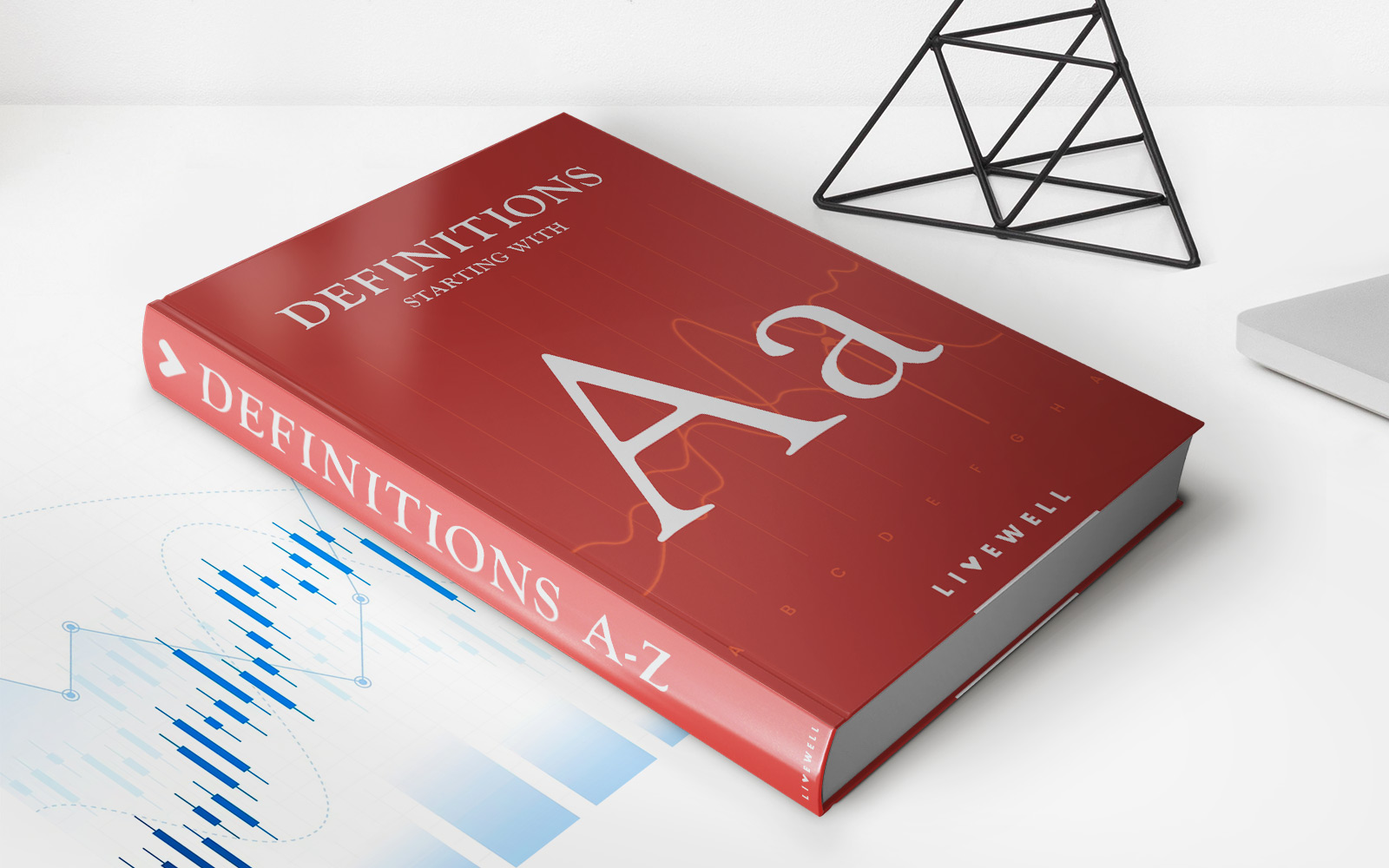

Finance
What Does “Total Available Credit” Mean
Modified: March 6, 2024
Learn what "Total Available Credit" means in finance. Find out how it affects your credit score and financial health.
(Many of the links in this article redirect to a specific reviewed product. Your purchase of these products through affiliate links helps to generate commission for LiveWell, at no extra cost. Learn more)
Table of Contents
Introduction
When it comes to managing your finances, understanding the various terms and concepts is essential. One such term that plays a crucial role in your financial life is “Total Available Credit.” It is a metric that indicates the maximum amount of credit that you can access at a given time.
Whether you’re applying for a loan, using a credit card, or exploring other credit options, having a solid grasp of what total available credit means can empower you to make smarter financial decisions. In this article, we will delve into the definition, importance, calculation, and ways to increase your total available credit.
Having a solid understanding of total available credit can work in your favor in numerous ways. It can help you manage your credit utilization ratio, improve your credit score, and access credit when you need it most. So, let’s dive deeper into the fascinating world of total available credit and explore how it can impact your financial well-being.
Definition of Total Available Credit
Total Available Credit refers to the maximum amount of credit that a borrower can access at any given time. It represents the total cumulative credit limits across all of a person’s credit accounts, such as credit cards, lines of credit, and other types of loans.
For example, if you have three credit cards with credit limits of $5,000, $3,000, and $2,000 respectively, your total available credit would be $10,000.
It’s important to note that total available credit doesn’t indicate the amount of credit that you currently owe. It simply represents the maximum credit limit that has been extended to you by lenders or financial institutions.
Total available credit plays a vital role in determining your credit utilization ratio, which is the percentage of your available credit that you are currently utilizing. A lower credit utilization ratio is generally viewed positively by lenders as it reflects responsible credit management and potential financial stability.
In summary, total available credit is the sum of all the credit limits across your various credit accounts and serves as a measure of the maximum credit you can access at any given time.
Importance of Total Available Credit
The total available credit plays a significant role in your financial life and can have a profound impact on your creditworthiness and overall financial well-being. Here are some key reasons why understanding and managing your total available credit is important:
- Credit Utilization: Your total available credit is a crucial factor in calculating your credit utilization ratio. This ratio compares your credit card balances to your total available credit and is a key component of your credit score. Maintaining a low credit utilization ratio, typically below 30%, demonstrates responsible credit management and can positively influence your creditworthiness.
- Credit Score: Your credit score is a numerical representation of your creditworthiness. Lenders use it to assess the risk of lending money to you. A higher credit score generally translates to more favorable loan terms and lower interest rates. Your total available credit contributes to your credit score by influencing your credit utilization ratio, which accounts for 30% of the FICO credit scoring model.
- Financial Flexibility: Having a higher total available credit gives you access to additional funds when you need them. Whether it’s for emergencies, unexpected expenses, or planned purchases, having a higher credit limit can provide you with the flexibility and peace of mind to handle financial situations effectively.
- Better Loan Terms: When you apply for various loans, such as a mortgage, car loan, or personal loan, lenders consider your creditworthiness. A higher total available credit can demonstrate responsible credit management and increase your chances of getting approved for a loan. Additionally, it can also lead to more favorable loan terms, such as lower interest rates and higher borrowing limits.
- Building Credit History: Managing your total available credit responsibly by making timely payments and keeping your credit utilization low can help you build and maintain a positive credit history. A strong credit history is essential for future borrowing needs and can open doors to better financial opportunities.
Overall, understanding and managing your total available credit is crucial for maintaining a healthy credit profile, improving your credit score, and accessing credit on favorable terms. By being mindful of your total available credit and using it responsibly, you can pave the way for a financially secure future.
Factors Affecting Total Available Credit
Several factors influence your total available credit. It’s important to be aware of these factors as they can impact your ability to access credit and manage your financial obligations. Here are the key factors that affect your total available credit:
- Credit Limit: The credit limit is the maximum amount that a lender or financial institution allows you to borrow on a specific credit account. Higher credit limits contribute to a higher total available credit, while lower credit limits will limit your available credit. Lenders determine your credit limit based on various factors including income, credit history, and creditworthiness.
- Payment History: Your payment history is a crucial factor in determining your total available credit. Consistently making timely payments on your credit accounts demonstrates responsible credit management. On the other hand, late payments or defaulting on your payments can negatively impact your creditworthiness, potentially reducing your total available credit.
- Credit Utilization Ratio: As mentioned earlier, your credit utilization ratio is the percentage of your total available credit that you are currently utilizing. A low credit utilization ratio, typically below 30%, is favorable to lenders. By keeping your credit card balances and other outstanding debts low relative to your total available credit, you can maintain a healthier credit utilization ratio and potentially increase your total available credit.
- Credit History and Length of Credit: Your credit history and the length of your credit accounts also play a role in your total available credit. Lenders tend to favor borrowers with longer credit histories as it provides more data to assess creditworthiness. Having a longer credit history and a good repayment track record can increase your chances of obtaining higher credit limits and ultimately contribute to a higher total available credit.
- Credit Inquiries and New Accounts: Opening multiple new credit accounts within a short period can temporarily lower your total available credit. This is because lenders may view multiple credit inquiries as a sign of potential financial strain. While new credit accounts can eventually contribute to a higher total available credit, it’s important to be mindful of the impact that new accounts and inquiries can have in the short term.
Understanding these factors can help you navigate the world of credit and make informed decisions regarding your total available credit. By responsibly managing your credit, maintaining a positive payment history, and keeping your credit utilization low, you can maximize your total available credit and enhance your financial flexibility.
How Total Available Credit is Calculated
The calculation of total available credit is based on several factors, primarily the credit limits assigned to your various credit accounts. Here’s a breakdown of how total available credit is derived:
- Add up Credit Limits: To calculate your total available credit, you need to add up the credit limits of all your credit accounts. This includes credit cards, lines of credit, personal loans, and any other credit facilities you have. For example, if you have a credit card with a limit of $5,000, another card with a limit of $3,000, and a line of credit with a limit of $10,000, your total available credit would be $18,000.
- Exclude Outstanding Balances: It’s important to note that total available credit does not include any outstanding balances or debts you currently owe on your credit accounts. Total available credit represents the maximum credit that you can access, not the amount of credit you are currently utilizing.
- Maintain Credit Utilization Ratio: Your total available credit also impacts your credit utilization ratio, which is the percentage of your available credit that you are currently using. To maintain a healthy credit utilization ratio, it’s advisable to keep your outstanding balances low in proportion to your total available credit. This can positively impact your creditworthiness and future borrowing potential.
It’s crucial to remember that the total available credit can change over time. Lenders may periodically review your creditworthiness and adjust your credit limits accordingly. Factors such as your payment history, credit utilization, and overall financial stability can influence these decisions.
Monitoring your total available credit regularly allows you to stay aware of your credit limits and make informed financial decisions. By understanding how total available credit is calculated and actively managing your credit, you can optimize your financial well-being and enhance your creditworthiness.
Ways to Increase Total Available Credit
If you’re looking to increase your total available credit, there are several strategies you can implement. By taking proactive steps and demonstrating responsible credit management, you can expand your access to credit. Here are some effective ways to increase your total available credit:
- Seek Credit Limit Increases: Contact your credit card issuers and inquire about the possibility of increasing your credit limits. Higher credit limits can result in a greater total available credit. Lenders may consider your payment history, income, and creditworthiness when determining whether to grant a credit limit increase.
- Pay Off Existing Debts: By reducing or eliminating your outstanding balances on credit accounts, you can lower your credit utilization ratio. This, in turn, can increase your total available credit. Consider creating a debt repayment plan and allocate extra funds towards paying down existing debts.
- Make Timely Payments: Consistently making on-time payments demonstrates responsible credit management and can positively impact your creditworthiness. By paying your bills in full and on time, you can build a solid credit history, which may lead lenders to increase your credit limits.
- Manage Your Credit Utilization Ratio: Aim to keep your credit utilization ratio below 30%. Avoid maxing out your credit cards and strive to use a smaller percentage of your total available credit. Responsible credit utilization can help improve your credit score and signal to lenders that you can handle larger credit limits.
- Consider New Credit Options: Applying for new credit accounts, such as a credit card or a personal loan, can increase your total available credit. However, exercise caution and only apply for new credit when necessary. Multiple credit inquiries within a short period can temporarily lower your credit score.
- Monitor and Review Your Credit Report: Regularly check your credit report for any errors or discrepancies. Inaccurate information could negatively impact your creditworthiness and potentially lower your total available credit. Dispute any errors you find to ensure your credit report reflects accurate and up-to-date information.
- Build Strong Credit History: Building a solid credit history takes time and responsible credit management. Ensure that you make consistent, on-time payments, avoid excessive debt, and maintain a positive credit utilization ratio. Over time, these efforts can boost your creditworthiness and increase your total available credit.
Remember, increasing your total available credit is a gradual process that requires responsible credit management and time. By implementing these strategies and consistently demonstrating financial responsibility, you can successfully expand your total available credit and enhance your financial flexibility.
Common Misconceptions about Total Available Credit
There are several common misconceptions surrounding total available credit that can lead to confusion and misinformation. It’s important to dispel these myths and understand the reality of how total available credit works. Here are some common misconceptions:
- Having a high credit limit means I can spend freely: While having a higher credit limit can provide you with more available credit, it doesn’t mean you should spend beyond your means. It’s essential to practice responsible spending and avoid accumulating excessive debts, regardless of your available credit.
- Unused credit limits automatically increase my credit score: While having unused credit limits can potentially improve your credit utilization ratio, which is a factor in calculating your credit score, it does not automatically guarantee an increase in your credit score. Factors such as payment history, credit mix, and length of credit history also influence your creditworthiness.
- Closing credit accounts will increase my total available credit: Closing unused credit accounts may actually decrease your total available credit. This is because closing an account reduces your overall credit limit, which then narrows down the amount of credit available to you. However, if you have multiple accounts with high annual fees or are struggling with managing multiple accounts, it may make sense to close some accounts strategically.
- Maxing out my credit cards won’t affect my total available credit: Maxing out your credit cards can significantly impact your total available credit. It increases your credit utilization ratio, which can be viewed negatively by lenders and affect your creditworthiness. It’s important to use credit responsibly and keep your outstanding balances lower in proportion to your total available credit.
- Increasing my total available credit will automatically improve my financial situation: While increasing your total available credit can provide you with more financial flexibility, it’s not a standalone solution to improving your financial situation. Responsible financial management, including budgeting, saving, and reducing debt, is crucial to achieving long-term financial well-being.
Understanding the reality behind these misconceptions is essential for making informed financial decisions. By debunking these myths and gaining a clear understanding of how total available credit works, you can navigate the world of credit more effectively and use credit to your advantage.
Conclusion
Total available credit is a fundamental concept in the world of finance that has a significant impact on your creditworthiness and financial flexibility. Understanding what total available credit means and how it is calculated is essential for making informed decisions about your finances.
Throughout this article, we have explored the definition of total available credit, its importance, the factors that affect it, and ways to increase it. We have debunked common misconceptions and shed light on the realities of managing total available credit.
By managing your total available credit responsibly, such as keeping your credit utilization ratio low and making timely payments, you can improve your creditworthiness, access credit when needed, and potentially obtain better loan terms. It’s crucial to remember that increasing your total available credit is a gradual process that requires a combination of responsible credit management, building a positive credit history, and establishing healthy financial habits.
As you navigate your financial journey, stay mindful of your total available credit and regularly review your credit reports to ensure accuracy. By maintaining a solid understanding of total available credit, you can make well-informed decisions about credit utilization, loan applications, and overall financial management.
Remember, your total available credit represents the maximum credit you can access, but it’s important to use credit responsibly and avoid overspending. By maintaining a healthy credit profile and maximizing your total available credit, you set yourself up for a more secure and prosperous financial future.














